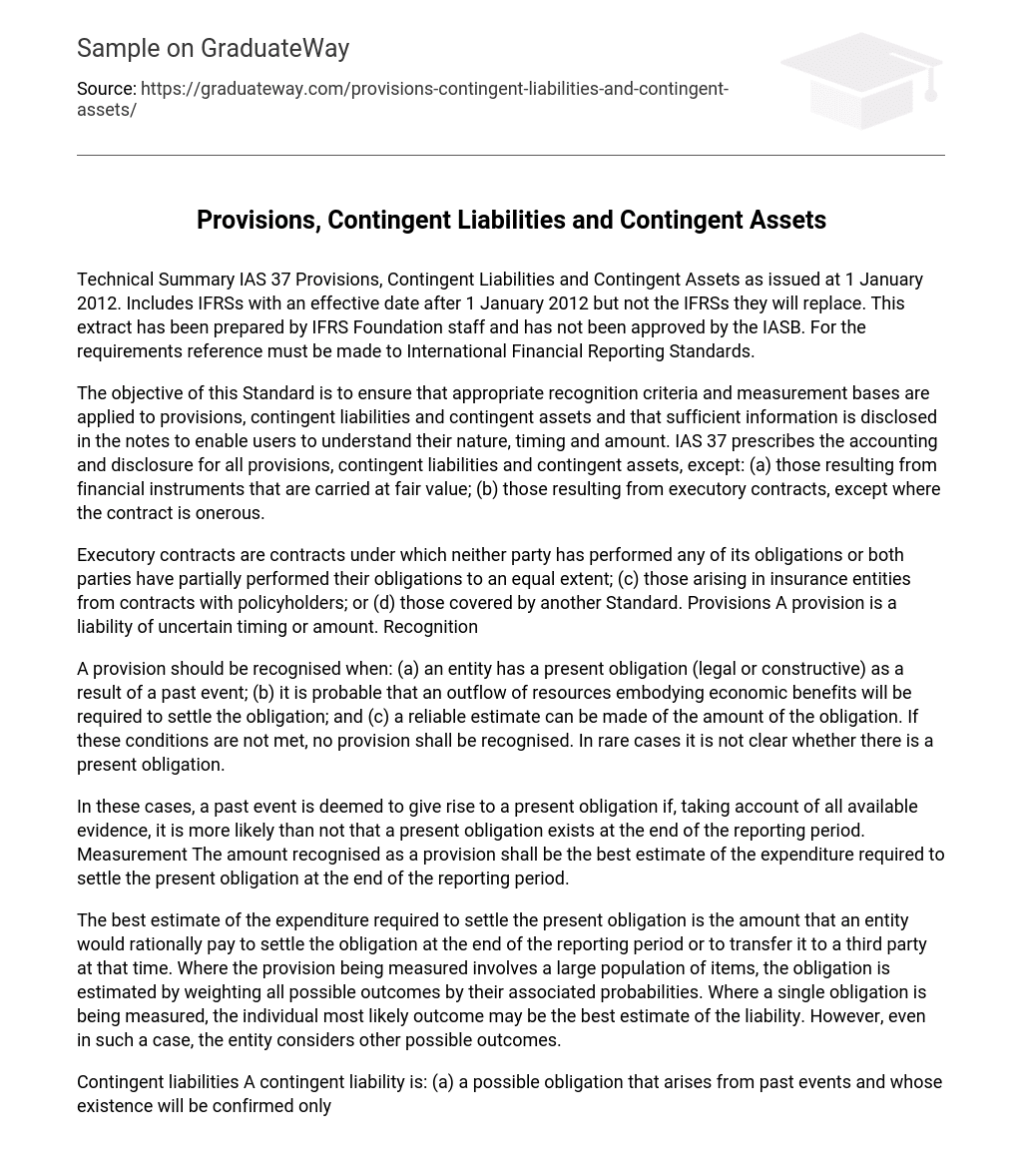The objective of this Standard is to ensure that appropriate recognition criteria and measurement bases are applied to provisions, contingent liabilities and contingent assets and that sufficient information is disclosed in the notes to enable users to understand their nature, timing and amount. IAS 37 prescribes the accounting and disclosure for all provisions, contingent liabilities and contingent assets, except:
- those resulting from financial instruments that are carried at fair value;
- those resulting from executory contracts, except where the contract is onerous. Executory contracts are contracts under which neither party has performed any of its obligations or both parties have partially performed their obligations to an equal extent;
- those arising in insurance entities from contracts with policyholders;
- those covered by another Standard. Provisions A provision is a liability of uncertain timing or amount.
A provision should be recognised when:
- an entity has a present obligation (legal or constructive) as a result of a past event;
- it is probable that an outflow of resources embodying economic benefits will be required to settle the obligation;
- a reliable estimate can be made of the amount of the obligation.
If these conditions are not met, no provision shall be recognised. In rare cases it is not clear whether there is a present obligation.
In these cases, a past event is deemed to give rise to a present obligation if, taking account of all available evidence, it is more likely than not that a present obligation exists at the end of the reporting period. Measurement The amount recognised as a provision shall be the best estimate of the expenditure required to settle the present obligation at the end of the reporting period.
The best estimate of the expenditure required to settle the present obligation is the amount that an entity would rationally pay to settle the obligation at the end of the reporting period or to transfer it to a third party at that time. Where the provision being measured involves a large population of items, the obligation is estimated by weighting all possible outcomes by their associated probabilities. Where a single obligation is being measured, the individual most likely outcome may be the best estimate of the liability. However, even in such a case, the entity considers other possible outcomes.
Contingent liabilities A contingent liability is:
- a possible obligation that arises from past events and whose existence will be confirmed only by the occurrence or non-occurrence of one or more uncertain future events not wholly within the control of the entity;
- a present obligation that arises from past events but is not recognised because: it is not probable that an outflow of resources embodying economic benefits will be required to settle the obligation, the amount of the obligation cannot be measured with sufficient reliability. An entity should not recognise a contingent liability.
An entity should disclose a contingent liability, unless the possibility of an outflow of resources embodying economic benefits is remote. A contingent asset is a possible asset that arises from past events and whose existence will be confirmed only by the occurrence or non-occurrence of one or more uncertain future events not wholly within the control of the entity. An entity shall not recognise a contingent asset. However, when the realisation of income is virtually certain, then the related asset is not a contingent asset and its recognition is appropriate.





